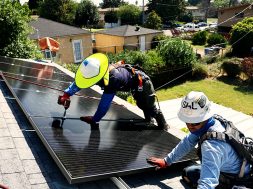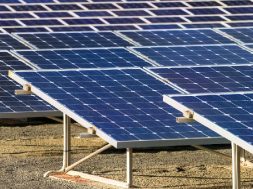
Look how the sun is making waves in Kerala’s backwaters
ZERO CARBON emission, hundreds of litres of diesel saved and just 5 paisa spent on every passenger per kilometre. Six months after Kerala launched its first solar-powered boat on its famous backwaters, the performance review is in. And, it is so encouraging, say officials, that the state is now planning to purchase 10 more of these boats.
“The operational cost of the boat, Aditya, is Rs 163 per day against a diesel boat’s Rs 7,000. Our estimate is the annual operational cost would run into just Rs 60,000, while a diesel boat’s cost for the same period would be Rs 24.5 lakh,” says Shaji Nair, director of Kerala’s water transport department.
According to K Sivaprasad, a faculty member of the ship technology department of Cochin University of Science and Technology (CUSAT) and a key hand behind the boat’s design, it “saves fuel and leaves zero carbon footprints without compromising on speed”.
“Its average speed is 5.5 knots, which is the maximum a boat can attain in Alappuzha’s Kuttanadu backwaters. Aditya’s operational speed is 7 knots. Considering the requirement of speed, Aditya’s 40KW energy capacity is no lesser than that of a similar diesel boat with a maximum of 75KW. A diesel boat can achieve a speed of 10 knots but then, no passenger boat can cross 7 knots in Kerala’s inland waterways, with hundreds of catamarans and smaller boats plying,” says Sivaprasad.
This is what the water transport department’s performance review, conducted over the last three months, has revealed:
A diesel boat needs 100 litres of fuel per day and 35,000 litres annually while Aditya has zero fuel requirements. n CO2 emission is zero for Aditya while a diesel boat generates 90 tonnes during a similar operational period.
The cost of transporting a passenger per kilometre is 5 paise on Aditya, and 170 paise on a diesel boat.
And perhaps, most importantly for Kerala, Aditya managed to complete its 22 regular daily trips even on rainy days.
It was in 2012 that Nair first approached Sivaparasad and his senior Dileep Ramakrishnan, the then head of CUSAT’s ship technology wing, seeking a concept note for a solar-powered boat. Within a year, the CUSAT team had completed a feasibility study and got the administrative and financial approval from the government.
“We completed building the boat between 2013 and 2016. There was a minor delay as we chose to adopt the standards prescribed by the Indian Registry of Shipping (IRS), considering safety factors, instead of the Inland Vessel Rule Design. After completing the craft design and structure in October 2016, we held test trials that lasted two months with the help of trained handlers who tested the power, energy and safety aspects in different climatic conditions,” says Sivaprasad.
Now, he says, the idea can be implemented across various platforms, including the ubiquitous houseboats in Kerala’s backwaters that draw lakhs of tourists every year but also pollute its lakes and backwaters. “A double-decker houseboat with a flat roof could easily replace its fuel tank with efficient solar panels readily available. Those with curved roofs will also get solar panels that suits their design. Maybe, the initial cost (Rs 1.5 crore) is preventing many from switching from polluting fuel-powered boats,” he said.
Today, even in the midst of Kerala’s monsoon season, Aditya has been completing daily quota of trips a day, covering a distance of 3 km in less than 15 minutes with a maximum capacity of 75 passengers. Currently, it plies on the Vaikom-Thavanakadavu route in Alappuzha district, a distance of 3 km, with one ticket costing a maximum of Rs 4.
C Kannan, a resident of Vaikom, says a cooling fan attached to the boat’s motors produce the only faint noise that he can hear on board Aditya. “Diesel boats are shaky and noisy. You couldn’t make a single phone call when you cross the waters in usual boats. I can easily make calls now,” says Kannan, who takes the boat often for his business trips to reach the mainland.
According to Sivaprasad, except for the German-made battery cells beneath the hull, the entire boat is made of Indian material. “This is ‘Make In India’,” he says.
















